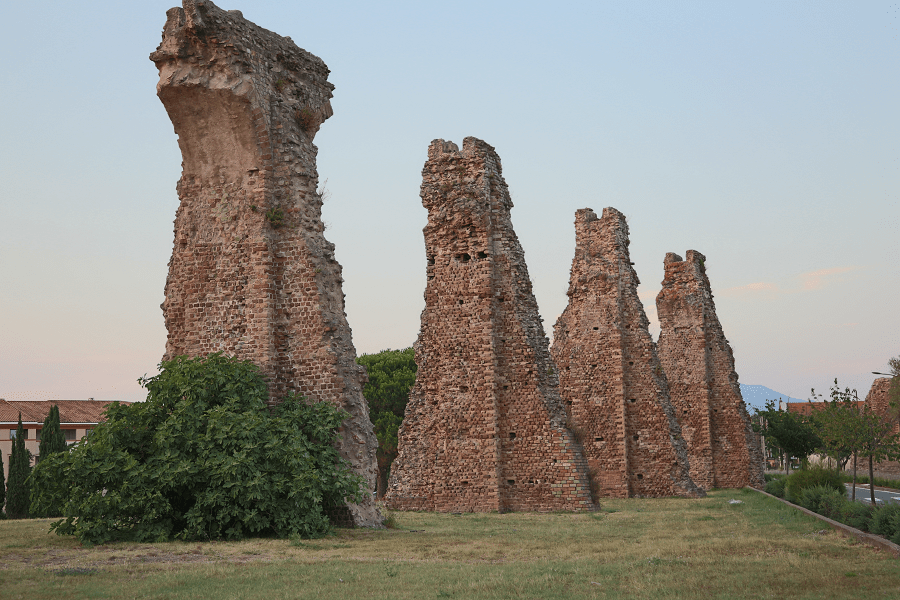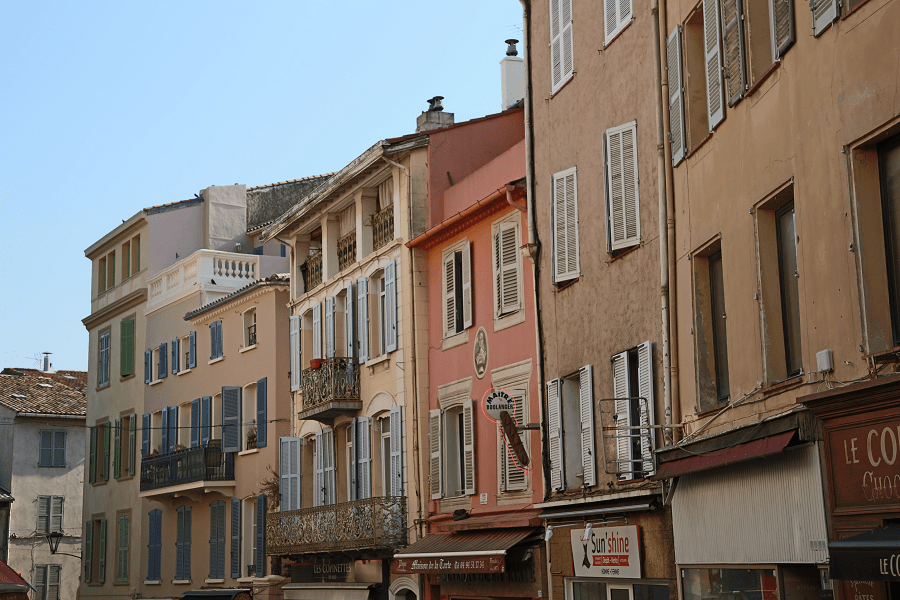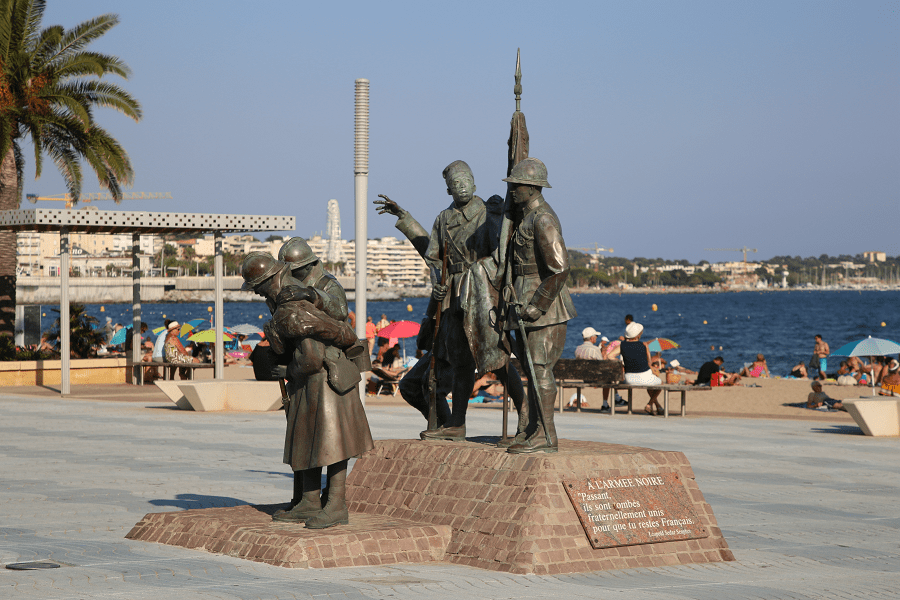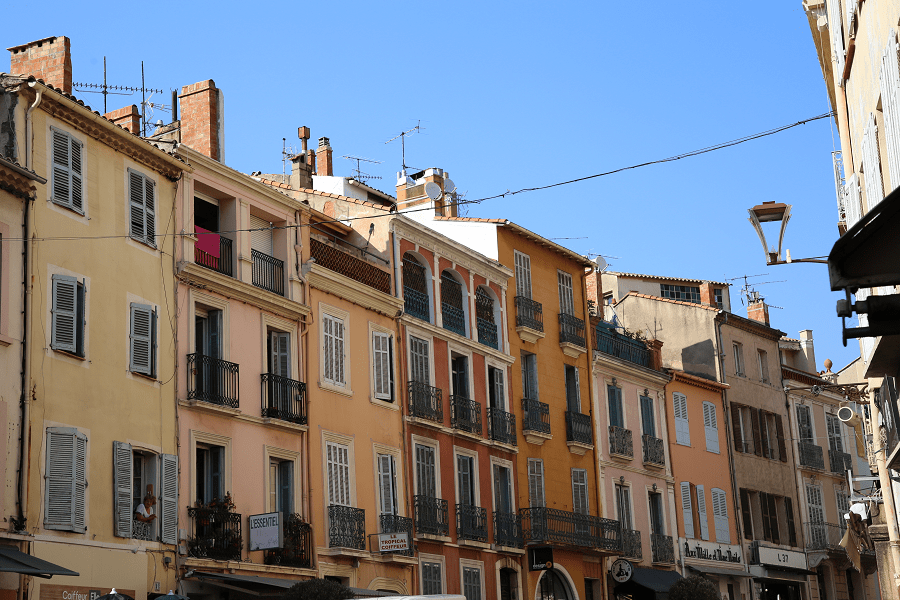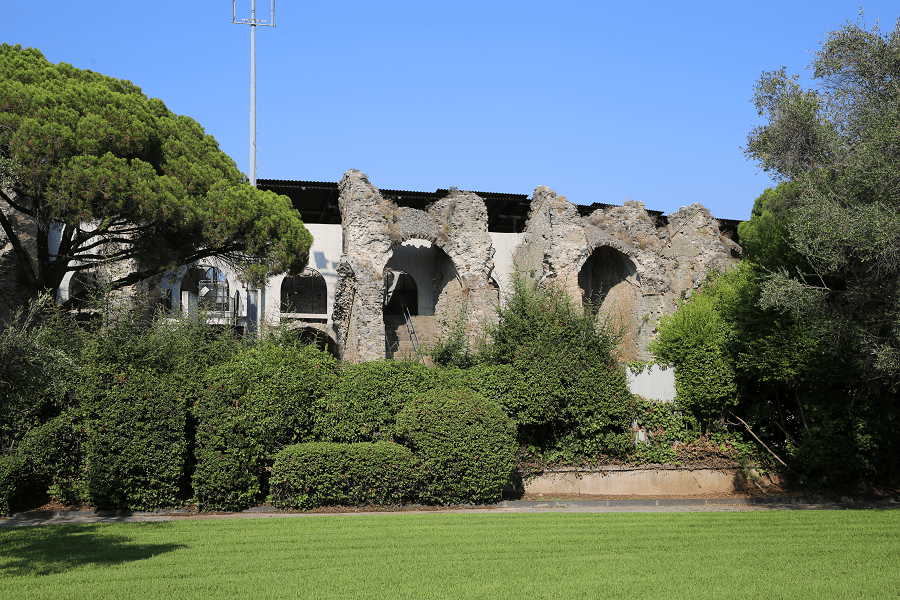Fréjus (fr. Fréjus) is a commune in the Var department in the Provence-Alpes-Côte d’Azur region in southeastern France. Part of French Riviera.
Located on the shore of the Mediterranean Sea, at the mouth of the Argens and Reyran rivers, it is the capital of the canton of Fréjus, the associated seat of the diocese, a seaside and tourist resort on the Côte d’Azur, a city of art and history and the co-founder of the association of “Cities and Crafts of Art”.
Tourism and attractions
The heritage of Fréjus is rich in the various periods of occupation of the territory by man. This heritage is partly highlighted as part of the city of art and history classification.
The first trace of occupation still visible dates from the occupation of the Ligurians with the L’Agriotier dolmen in Saint-Aygulf.
The richest architectural period in Fréjus was undoubtedly the creation of Forum Julii, a Roman colony with many buildings, which made it the richest concentration in France after Arles. The most remarkable are: amphitheatre, aqueduct and theatre.
The ancient city, partly listed as historical monument, is home to many architectural elements: the remains of the Ramparts, the gates of Rome, Reyran, d’Orée, the Agricola square with the Gaul gate, the citadels on the Butte Saint-Antoine and the platform with a cistern and baths, an exedra on the Saint-Antoine hill, a pavement of the Via Aurelia which passed through the city, columns, the remains of the ancient port, the pier and the lantern of Augustus, a mosaic entitled “Au combat des coqs”.
From the fourth century, Fréjus became one of the first bishoprics in France. Only few vestiges remain from this period except the foundations of the cathedral and the fifth century baptistery.
The Middle Ages were rich in Fréjus and many more buildings remain, including the remains of the eleventh century Saint-Lambert chapel, the Romanesque cloister of the bishopric dating from the twelfth century, as well as the nave and the aisle. The narthex, the bell tower and the fortified facade date from the thirteenth century. The decorations such as the paintings in the cloister or the carpentry ceiling, the arcades of the cathedral gallery date from the fourteenth century in a radiant Gothic style. The town hall also dates from the fourteenth century with its library, the archives in the old chapel and the square defence tower. Finally, the stalls, the arched doorway and the gate of the sacristy date back to the fifteenth century.
From the Renaissance period remain the entrance door to the cathedral, the crucifix and the representation of the Nativity and the Saint-François de Paule chapel, all from the sixteenth century, the statues of saints in the cathedral, a monumental door of the hotel in rue Sieyès, the chapel of the former convent on rue Montgolfier and the seventeenth century chapel of Saint-Aygou. The eighteenth century left the Hôtel des Quatre Saisons, avenue du Général De Gaulle, the Auberge des Adrets, the haunt of the bandit Gaspard de Besse, the Château de Villepey and the Sainte-Brigitte du Reyran chapel.
The nineteenth century was marked by the construction of the Villa Marie and Villa Maria, the Aurélien castle, and the artillery battery of Saint-Aygulf, the old hospital which has now become the courthouse, the fountain of Cinq Continents on the Place Paul Vernet, the Turcan school, the Villa Clythia, the Grand Hôtel Coirier in Valescure.
Finally, the twentieth century saw the town enriched with the Gallieni castle, the Missiri mosque in 1930, the Le Lido building in a Venetian style in 1934, the memorial of the Black Army, the Malpasset dam in 1954, the Cocteau chapel in 1963, Port-Fréjus and the Albert Camus high school by the architect Norman Foster in 1993.
The Missiri mosque built in 1930 , the Notre-Dame-de-Jerusalem chapel known as “Cocteau” built in 1963 by the architect Jean Triquenot and the buildings of the La Fréjusienne cooperative made in 1921 by the architect Henri Draperi – benefit from the “20th Century Heritage” label.
Gastronomy and restaurants
Fréjus is known for its peaches and anchovy production. Côtes de Provence Fréjus is a sub-zone of the controlled designation of origin. In the legal language of French wine appellations, they say that the AOC Côtes de Provence Fréjus is a wine denomination of the AOC Côtes de Provence.
The local specialty is Pavés du Cloître, a puff pastry candy with almonds surrounded by a thin caramelized shell.
The best restaurants are in the Old Town.
Beaches
Sand Plage de Frejus (Bustling urban beach for swimming & water sports, with amenities such as parking & restaurants). Nearest beaches: Plage Parc Areca, Plage du Pébrier, Plage de Saint-Aygulf, Plage de la Galiote, Beach Esclamandes, Plage du Grand Boucharel, Plage Veillat, Plage du Petit Boucharel, Plage des Fournas.
Shopping
Regular markets take place in Frejus each Wednesday, Tuesday, Sunday, Saturday.
Transport and how to get to?
Fréjus is accessible by car, by the A8 (E80) motorway with three exits: “Puget-sur-Argens – Fréjus western districts”, “Fréjus-Saint-Raphaël” and “Les Adrets-de-l’Estérel”.
By train: the Fréjus station (SNCF) is located on the line from Marseille-Saint-Charles to Ventimiglia (border), served by lines 03 and 06 of the Provence-Alpes-Côte d’Azur TER. Saint-Raphaël-Valescure station provides access to the TGV, iDTGV and Intercités networks.
By bus: the new bus station at the bottom of the Clos de la Tour car park is served by line 20 of the LER PACA network, lines 2601, 2602, 3601, 3602, 3603, 7601 and 7702 of the Varlib departmental network and CPF coaches Beltrame group line 3003 to Nice-Côte d’Azur airport and lines 1, 1bis, 2, 3, 4, 5, 6, 7, 9, 10, 11, 14, 24A and 24B of the intercommunal network AggloBus Fréjus / Saint-Raphaël operated by Estérel Car [Veolia Transport] and Rafaël bus.
By plane: Cannes – Mandelieu airport is 22 kilometers away, Nice-Côte d’Azur airport 46 kilometers, Toulon – Hyères airport 61 kilometers and the airport from La Môle – Saint-Tropez at 33 kilometers.
By boat: the Bateaux de Saint-Raphaël shuttle service connects Port-Fréjus, Saint-Aygulf and Saint-Raphaël. From Port-Fréjus, the speedboats allow you to reach Saint-Tropez and Cannes.
Shortest distance by car:
From Menton (tolls): 1 h 15 min (95.2 km) via A8
From Monaco (tolls): 1 h 9 min (86.6 km) via A8
From Beaulieu-sur-Mer (tolls): 1 h 13 min (74.2 km) via A8
From Villefranche-sur-Mer (tolls): 1 h 11 min (71.6 km) via A8
From Nice (tolls): 56 min (64.8 km) via A8
From Cagnes-sur-Mer (tolls): 43 min (53.0 km) via A8
From Antibes (tolls): 46 min (50.5 km) via A8
From Cannes (tolls): 42 min (38.0 km) via A8
From Mandelieu-La Napoule (tolls): 24 min (28.7 km) via A8
From Saint-Raphaël: 9 min (3.4 km) via Avenue de Provence/D559
From Sainte-Maxime: 32 min (22.6 km) via D8
From Saint-Tropez: 52 min (37.6 km) via D559 and D8
From Cavalaire-sur-Mer: 1 h 1 min (42.8 km) via D559 and D8
From Toulon (tolls): 1 h 2 min (90.8 km) via A57 and A8
From Aix-en-Provence (tolls): 1 h 20 min (117 km) via A8
From Nîmes (tolls): 2 h 23 min (222 km) via A8
From Marseille (tolls): 1 h 36 min (141 km) via A8
From Avignon (tolls): 2 h 2 min (202 km) via A7 and A8
From Montpellier (tolls): 2 h 48 min (268 km) via A8
From Sète (tolls): 2 h 57 min (296 km) via A8
From Agde (tolls): 3 h 11 min (321 km) via A9 and A8
From Pézenas (tolls): 3 h 12 min (323 km) via A9 and A8
From Béziers (tolls): 3 h 20 min (333 km) via A9 and A8
From Perpignan (tolls): 3 h 57 min (417 km) via A9 and A8
From Argelès-sur-Mer (tolls): 4 h 18 min (444 km) via A9 and A8
From Collioure (tolls): 4 h 24 min (451 km) via A9 and A8
From Narbonne (tolls): 3 h 28 min (356 km) via A9 and A8
From La Baule-Escoublac (tolls): 10 h 43 min (1,163 km) via A62
From Saint-Nazaire (tolls): 10 h 39 min (1,149 km) via A62
From Nantes (tolls): 10 h 1 min (1,085 km) via A62
From Saumur (tolls): 8 h 51 min (955 km) via A7
From Les Sables-d’Olonne (tolls): 10 h 1 min (1,074 km) via A62
From Cognac (tolls): 8 h 11 min (860 km) via A62
From Angoulême (tolls): 8 h 8 min (858 km) via A62
From Eauze (tolls): 6 h 22 min (632 km) via A9
From La Rochelle (tolls): 8 h 38 min (922 km) via A62
From Rochefort (tolls): 8 h 15 min (894 km) via A62
From Saintes (tolls): 7 h 55 min (858 km) via A62
From Arcachon (tolls): 7 h 27 min (796 km) via A62
From Royan (tolls): 8 h 21 min (862 km) via A62
From Biarritz (tolls): 7 h 28 min (804 km) via A64
From Saint-Jean-de-Luz (tolls): 7 h 31 min (810 km) via A64
From Bayonne (tolls): 7 h 18 min (792 km) via A64
From Dax (tolls): 7 h 19 min (771 km) via A64
From Lourdes (tolls): 6 h 20 min (670 km) via A64
From Pau (tolls): 6 h 34 min (688 km) via A64
From Périgueux (tolls): 7 h 17 min (778 km) via A20
From Bordeaux (tolls): 6 h 59 min (744 km) via A62
From Toulouse (tolls): 4 h 49 min (503 km) via A61, A9 and A8
From Carcassonne (tolls): 3 h 58 min (412 km) via A9 and A8
From Andorra (tolls): 6 h 38 min (592 km) via A9
Main information
Area: 102.3 sq. km
Population: 52 700
Languages: French
Currency: euro
Visa: Schengen
Time: Central European UTC +1
Coordinates: 43°25′59″N 6°44′13″E
See here best sea and ocean resorts of France and Spain (223 objects)





